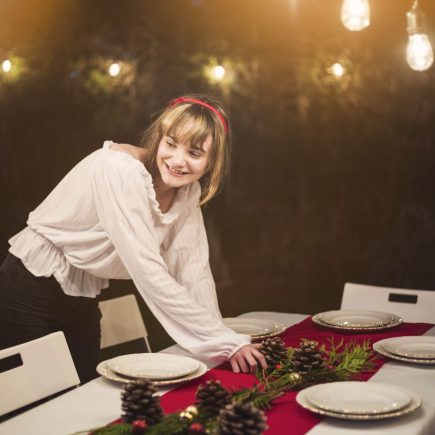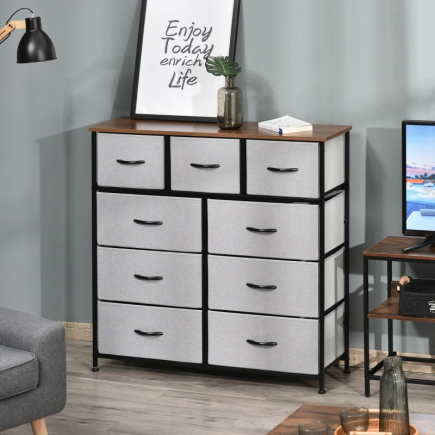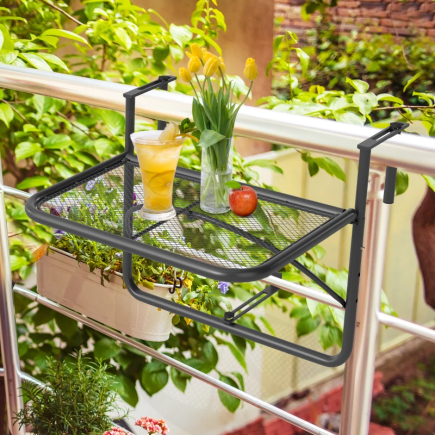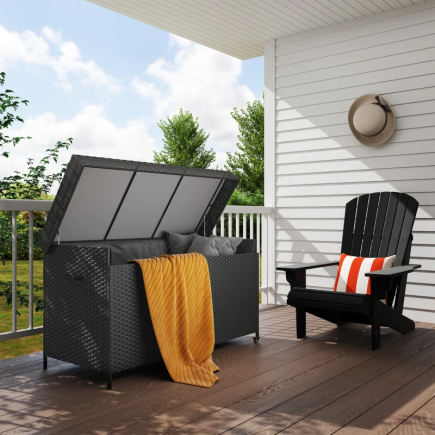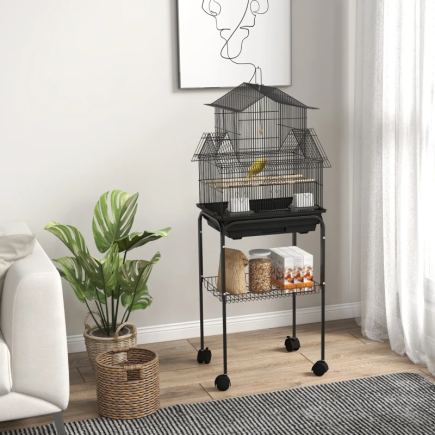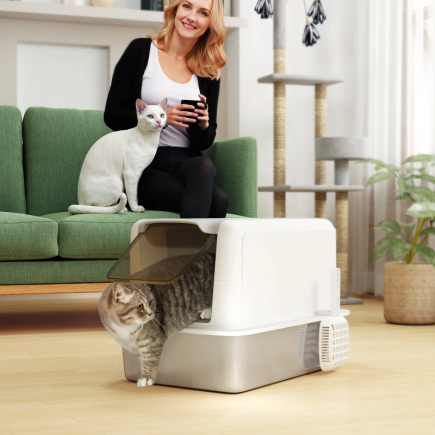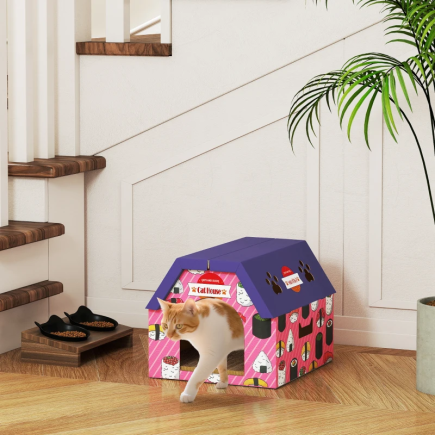
A bookcase is more than a storage piece, it shapes the character of your space while keeping books, décor, and personal treasures organized. The right choice balances size, material, style, and function, ensuring it complements your room and lasts for years. In this article, we’ll cover everything you need to know to choose a bookcase that fits your space, matches your lifestyle, and enhances your home.
Defining Your Needs: What Will You Store?
The first decision to make is not what style you like, it’s what you need the bookcase to do. Storage requirements vary widely:
- Large book collections demand shelves that are deep, reinforced, and built for weight. Thin boards or weak joints will sag over time.
- Mixed-use storage often includes baskets, decorative boxes, or family albums. Cube-style bookcases are designed for this versatility.
- Showcasing décor requires open designs like ladder or étagère bookcases, which highlight objects without appearing bulky.
- Child-focused shelving should be low, stable, and easy to access. Safety is non-negotiable here.
Measuring the Room
A bookcase should feel proportional and practical in your space. Keep these points in mind:
- Measure the wall where the bookcase will sit to ensure it fits comfortably.
- Check clearances so it doesn’t block doors, windows, outlets, or walkways.
- Confirm delivery paths by measuring stairways, hallways, and doorframes.
- Outline the footprint with masking tape to visualize how it will look in the room.
Match the scale to the space:
- Tall, narrow units work best in compact rooms.
- Wide bookcases suit larger walls and open layouts.
Getting the dimensions right is key to choosing a bookcase that both looks good and works well in your space. Think about height, width, and depth together before making your decision.
Choosing the Right Dimensions

1. Height
- Short (under 36 inches): Best for kids’ rooms, play areas, or under windows. They also work as extra surfaces for lamps, plants, or décor.
- Medium (36 to 84 inches): The most practical size for most homes. These provide plenty of storage while keeping all shelves within easy reach.
- Tall (over 84 inches): Perfect for rooms with high ceilings. They make a bold statement and hold the most items but must be anchored to the wall for safety.
2. Width
- Narrow (under 20 inches): Ideal for hallways, corners, or small apartments where space is limited.
- Standard (20 to 50 inches): A balanced choice for most households, offering storage without overwhelming the wall.
- Wide (over 50 inches): Best for large walls or open-plan rooms. These can act as statement pieces, room dividers, or even entertainment centres.
3. Depth
- Shallow (under 10 inches): Slim and space-saving. Good for paperbacks, children’s books, or small decorative items.
- Standard (10 to 20 inches): The most common depth, fitting most books and décor comfortably.
- Deep (over 20 inches): Suited for oversized books, storage bins, or baskets. Useful for large collections but may feel bulky in smaller rooms.
When height, width, and depth are all considered together, you’ll end up with a bookcase that fits neatly into your room, feels balanced, and meets your storage needs.
Bookcase Types That Suit Different Homes
The type of bookcase you choose is as important as size. Here are the most common:
- Standard Freestanding: The traditional choice. Multiple shelves, varied heights, and endless finishes.
- Ladder: Leans against the wall with a slim profile. Excellent for small apartments or minimalist spaces.
- Cube: Modular compartments. Works equally well for books, baskets, or decorative displays.
- Corner: Utilizes dead space. Great for small homes where every square inch matters.
- Library/Wall Units: Expansive and dramatic, often paired with ladders. Best for large rooms and serious collectors.
- Floating Shelves: Mounted directly to the wall, creating a light and modern effect.
Your home’s architecture and layout often dictate which type feels most natural.
Materials and Finishes: Durability and Aesthetics
A bookcase’s material determines both longevity and style.
| Material | Advantages | Considerations |
| Solid Wood | Strong, classic, long-lasting | Heavy, higher cost |
| Engineered Wood (MDF/Particleboard) | Affordable, wide finish options | Less durable, may sag |
| Metal | Sleek, modern, durable | Cold appearance, scratches visible |
| Glass | Light, contemporary, enhances space | Fragile, weight-limited |
| Bamboo/Reclaimed | Eco-friendly, unique texture | May be more expensive |
Look for kiln-dried hardwoods like oak, maple, or walnut if you want heirloom durability. For budget-conscious buyers, engineered wood provides a balance of style and affordability.
Extra Features That Add Convenience
Modern bookcases often include thoughtful touches:

- Adjustable shelves allow you to reconfigure for tall vases or short paperbacks.
- Cabinets and drawers offer hidden storage, reducing visual clutter.
- Glass doors protect collectibles from dust.
- Integrated lighting highlights décor and creates ambience.
- Modular units let you expand as your collection grows.
Choose based on your lifestyle rather than novelty.
Safety and Stability
A bookcase must be safe, especially in homes with children or pets. Look for:

- Strong joints and thick shelves that don’t bend under weight.
- Anti-tip hardware included with tall units.
- Wall-mounting options for added stability.
- Wide, reinforced bases to reduce wobbling.
A stable bookcase protects not only your belongings but also your household.
Eco-Friendly and Sustainable Choices
Sustainability has become an important factor for many households, and bookcases are no exception. If you want an option that’s both stylish and environmentally conscious, here are some of the most practical materials to consider:
- Reclaimed wood: Crafted from repurposed timber, these bookcases reduce waste while offering a unique, weathered look full of character.
- Bamboo: A rapidly renewable material that is lightweight, durable, and naturally stylish. Its warm tones work well in both modern and traditional interiors.
- Recycled metals: Strong and long-lasting, they are often used in industrial or contemporary designs while reducing the need for new raw materials.
Choosing sustainable materials means you can enjoy a durable, attractive bookcase while also making a more responsible choice for the environment.
Matching Bookcase to Interior Styles
The right Bookcase should feel at home in your space.

- Rustic interiors pair beautifully with reclaimed wood and distressed finishes.
- Modern homes call for sleek lines, minimal ornamentation, and neutral colours.
- Industrial lofts benefit from black metal frames combined with wood planks.
- Minimalist or Scandinavian styles shine with light woods and clean silhouettes.
Always consider how the bookcase interacts with existing flooring, trim, and furniture.
Budgeting for Bookcases
Bookcases are available in a wide range of qualities and styles, from basic functional units to heirloom-quality pieces. The right choice depends on your lifestyle and long-term needs.
- Entry-level options are practical for renters, students, or anyone needing lightweight, portable furniture. These often include simple cube units or modular shelves that are easy to assemble and move.
- Mid-range designs offer a balance between durability and style. They often feature sturdy construction with attractive finishes, making them suitable for most households that want furniture to last several years.
- Premium bookcases are built for longevity, often made from solid materials with timeless craftsmanship. These are better suited for homeowners looking for a permanent investment that can be passed down or integrated into long-term décor.
When budgeting, consider whether you want something temporary and flexible or a lasting piece that will grow with your home.
Essential Considerations Before You Buy
Before committing, ensure the bookcase passes this test:
- Fits the dimensions of your space.
- Meets your storage needs without compromise.
- Matches your interior style and colour scheme.
- Offers durability and stability for safety.
- Aligns with your budget and sustainability goals.
Practical Styling Tips After Purchase
The way you decorate a bookcase can turn it from simple storage into a design feature. Keep these tips in mind:
- Balance heights: Mix tall objects like vases with horizontally stacked books to create visual rhythm.
- Layer textures: Combine glossy ceramics, matte finishes, and woven baskets for depth and variety.
- Leave space: Avoid filling every inch, open areas give shelves a lighter, more elegant look.
- Add greenery: Plants, whether small pots or trailing vines, soften edges and bring life to the display.
- Use baskets or boxes: Perfect for hiding smaller items while keeping the overall look neat and cohesive.
When styled with intention, a bookcase doesn’t just store your belongings, it reflects your personality and enhances the room’s atmosphere.
Making the Right Choice
A bookcase is both functional and expressive. The right one serves as storage, design element, and long-term investment. By clearly defining your needs, measuring carefully, selecting suitable types and materials, and considering features, safety, and sustainability, you can purchase with confidence. Your bookcase should not only organize your books and belongings but also reflect your personality and enhance the beauty of your home for years to come.
FAQs
1. How can I make a bookcase look less bulky in a small room?
Choose lighter finishes like white or natural wood, and style shelves with a mix of books and décor. Leaving some open space also helps the unit feel less heavy.
2. What is the best way to use a bookcase in an open-plan layout?
In open spaces, a wide or tall bookcase can act as a subtle room divider. Place it strategically to separate zones without blocking light or movement.
3. Can a bookcase be used for storage beyond books?
Yes, modern designs easily hold baskets, electronics, plants, or display items. Cube and modular bookcases are especially suited for mixed storage.
4. How do I keep a bookcase from collecting too much dust?
Bookcases naturally gather dust, especially open-shelf designs. To reduce buildup, choose models with doors, clean shelves regularly, and avoid placing them near vents or drafty windows.
5. Is it okay to place a bookcase near a heat source?
It’s best to avoid placing bookcases directly beside radiators, heaters, or fireplaces. Constant heat can dry out wood, weaken adhesives, and shorten the lifespan of your furniture.







